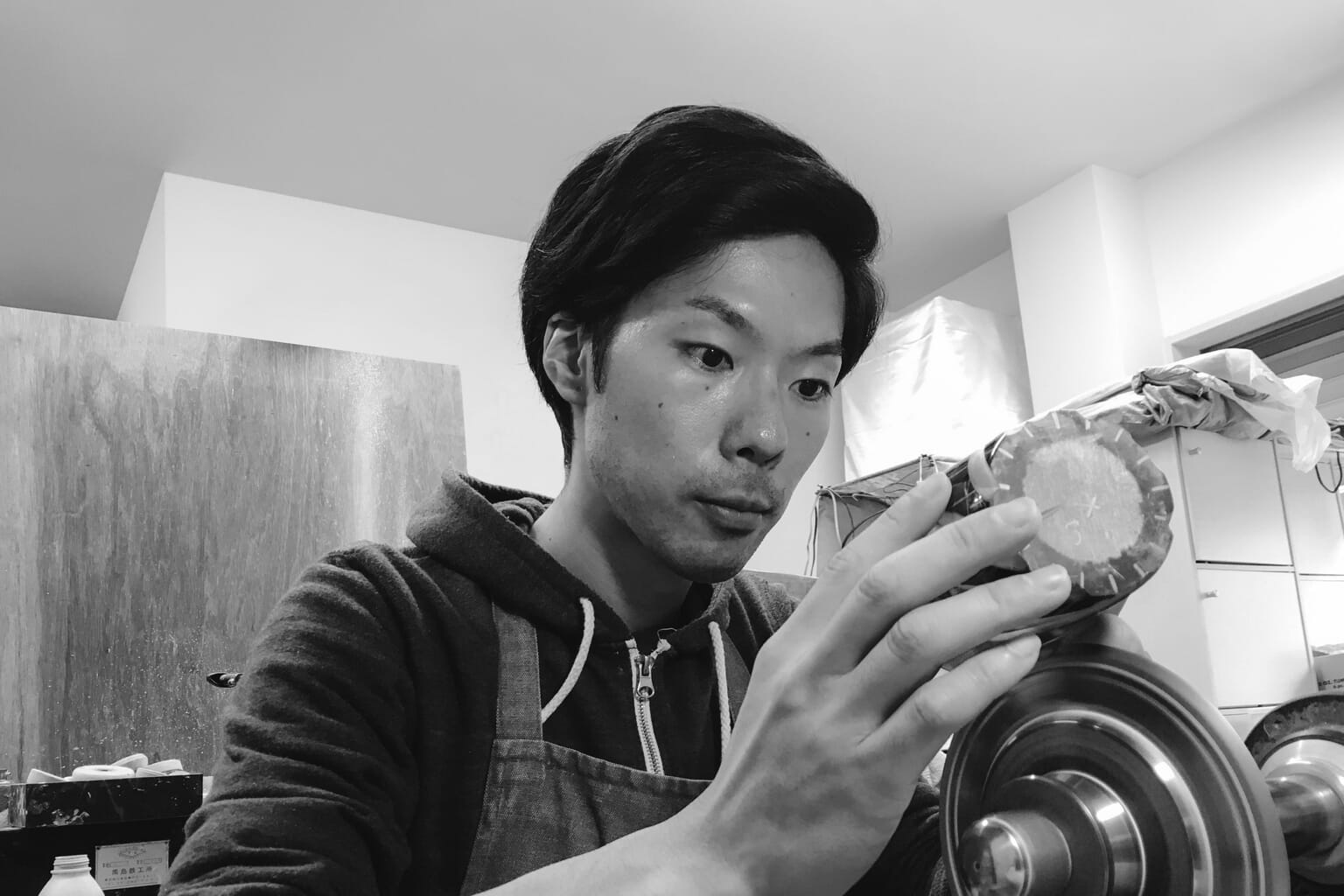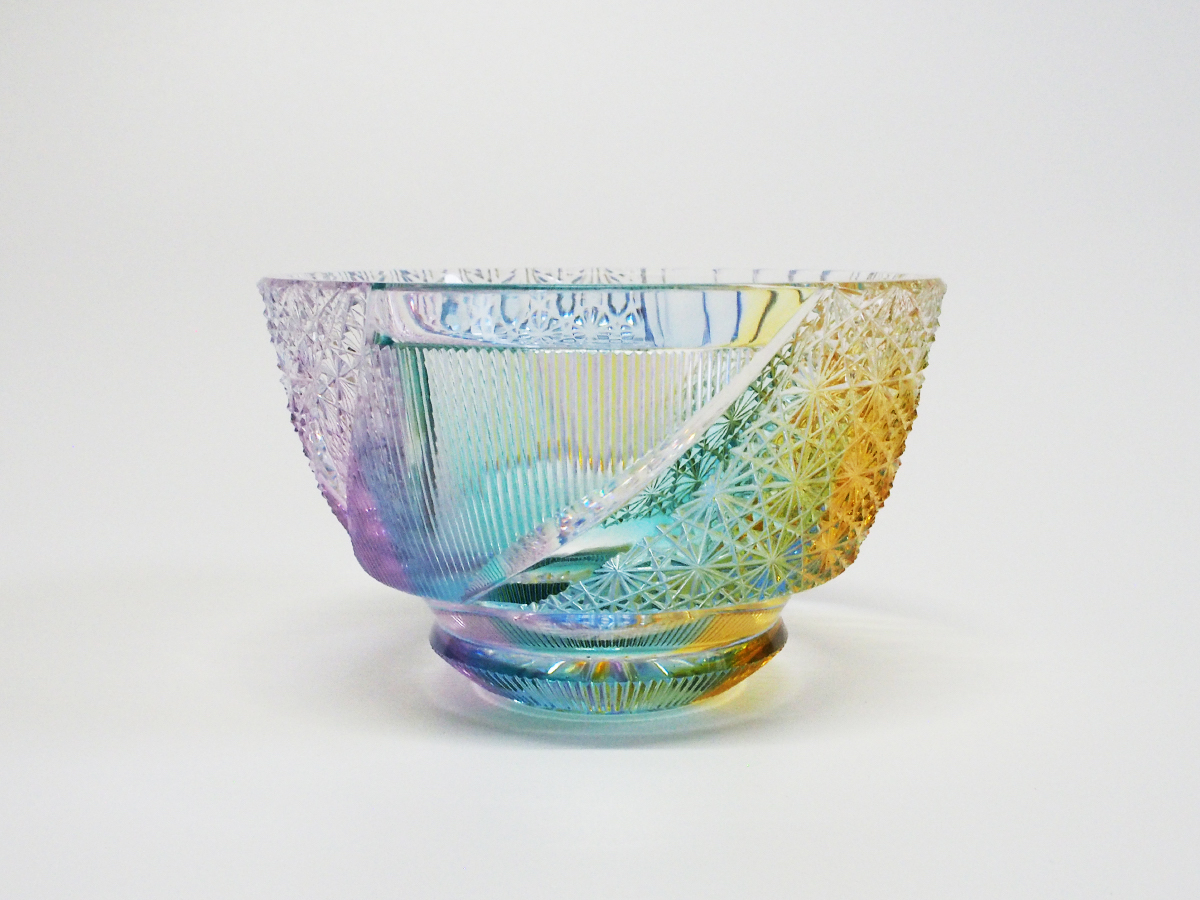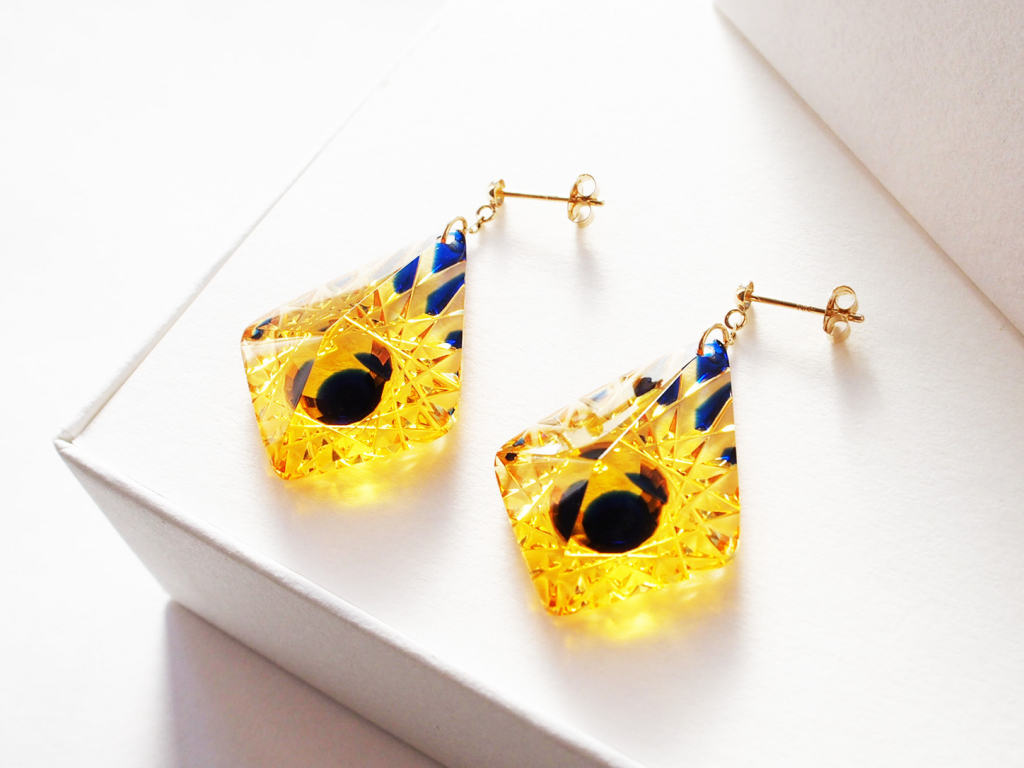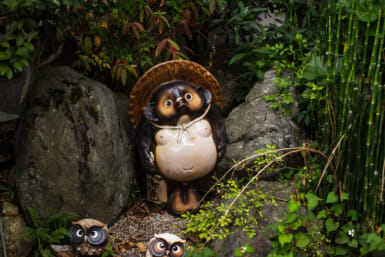Some traditional Japanese crafts like earthenware pottery can trace their histories back more than a few millennia. As such, Edo Kiriko glassware is a relative newcomer on the Japanese artisanal scene, first making an appearance in Edo (modern-day Tokyo) in 1834 when Kyubei Kagaya used an abrasive polishing agent known as emery to etch decorative patterns onto a drinking glass. The process was later refined in 1881 using cutting techniques that the British glassware artisan Emanuel Houptman taught to a small group of Japanese craftsmen. And thus, Tokyo’s distinctive craft of carving beautiful, intricate patterns into glass tableware was born, and was then quickly picked up by the Kobayashi family.

“We’ve been continuing the tradition of Edo Kiriko for over 100 years now, going all the way back to the Meiji Period,” explains Kohei Kobayashi, the current 4th-generation head of the Edo Kiriko Kobayashi workshop. “In the beginning, Edo Kiriko was made from colorless glass, but over the centuries various techniques were developed to produce colored glass that could be then adorned with detailed designs. Our glassware is instantly recognizable thanks to the fine cuts featuring designs as the kikutsunagi chrysanthemum pattern.”
The choice of using that flower as one of the workshop’s signatures wasn’t purely aesthetic. The chrysanthemum is a symbol of longevity and nobility in Japan, and even makes up the Imperial Seal of Japan, connecting the Kobayashi Edo Kiriko to traditions and history stretching far beyond the late 19th century.
That does not mean, however, that Kohei Kobayashi only looks to the past when it comes to his craft. “Our Uno series is made using an original process that I developed, which combines traditional Edo Kiriko techniques with kilnworking, where glass is produced inside an electric furnace,” the artisan explains. “Normally, Edo Kiriko glassblowers and glass cutters work separately, but using this technique, I’m able to handle the making of the glassware and decorating it on my own, producing something unique each time. As a result, every Uno piece is truly one-of-a-kind.”

In true Tokyo fashion, at Edo Kiriko Kobayashi, traditional techniques of the past are augmented by new technologies and ideas that allow the former to survive in the modern age. That is what’s needed to keep this Tokyo craft alive because despite its rather short history, it’s in a somewhat precarious position, with there only being 100 or so Edo Kiriko craftspeople in all of Japan. To make sure future generations can enjoy it, the craft has to change with the times.
“We want to share the beauty and brilliance of Edo Kiriko with as many people as possible,” Kobayashi says. “Which is why we’ve launched the tokoba brand of Edo Kiriko-style piercings, necklaces and other accessories.”
For more information go to Edo Kiriko Kobayashi workshop’s official website or Instagram.
This article was published in Tokyo Weekender’s special issue, Made in Japan. Flip through the issue by clicking on the image below.









